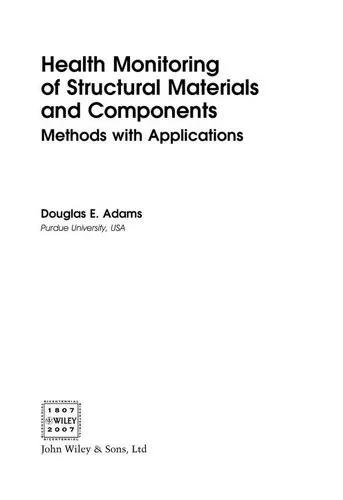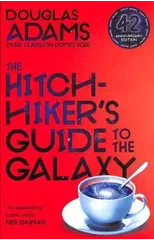Health Monitoring of Structural Materials and Components
Methods with Applications
(Author) Douglas AdamsThe first complete introduction to health monitoring, encapsulating both technical information and practical case studies spanning the breadth of the subject.Written by a highly-respected figure in structural health monitoring, this book provides readers with the technical skills and practical understanding required to solve new problems encountered in the emerging field of health monitoring. The book presents a suite of methods and applications in loads identification (usage monitoring), in-situ damage identification (diagnostics), and damage and performance prediction (prognostics). Concepts in modelling, measurements, and data analysis are applied through real-world case studies to identify loading, assess damage, and predict the performance of structural components, as well as examine engine components, automotive accessories, aircraft parts, spacecraft components, civil structures and defence system components.In particular the book, provides the reader with a fundamental and practical understanding of the material, discusses models demonstrating the physical basis for health monitoring techniques, gives a detailed review of the best practices in dynamic measurements including sensing, presents numerous data analysis techniques using model- and signal-based methods, discusses case studies involving real-world applications of health monitoring, offers end-of-chapter problems to enhance the study of the topic for students and instructors; and includes an accompanying website with MATLAB programs providing hands-on training to readers for writing health monitoring model simulation and data analysis algorithms.Health Monitoring of Structural Materials and Components is an excellent introductory text for newcomers to the subject as well as an excellent study tool for students and lecturers. Practitioners and researchers, those with a greater understanding and application of the technical skills involved, will also find this essential reading as a reference text to address current and future challenges in this field. The wide variety of case studies will appeal to a broad spectrum of engineers in the aerospace, civil, mechanical, machinery and defence communities. In particular the book: provides the reader with a fundamental and practical understanding of the material; discusses models demonstrating the physical basis for health monitoring techniques; gives a detailed review of the best practices in dynamic measurements including sensing; presents numerous data analysis techniques using model- and signal-based methods; discusses case studies involving real-world applications of health monitoring; offers end-of-chapter problems to enhance the study of the topic for students and instructors; and includes an accompanying website with MATLAB programs providing hands-on training to readers for writing health monitoring model simulation and data analysis algorithms.
Douglas Adams
Douglas Adams was a British author and humorist best known for his science fiction series "The Hitchhiker's Guide to the Galaxy." His witty and irreverent writing style, combined with his unique perspective on the universe, made him a beloved figure in the genre of comedic science fiction. Adams' work continues to inspire readers and writers alike, as he challenged the conventions of traditional science fiction and brought a fresh, humorous approach to the genre. "The Hitchhiker's Guide to the Galaxy" remains his most famous and enduring work, captivating audiences with its quirky characters, absurd situations, and philosophical musings on life, the universe, and everything. Adams' contributions to literature have left a lasting impact, solidifying his legacy as a master of blending humor and imagination in storytelling.






